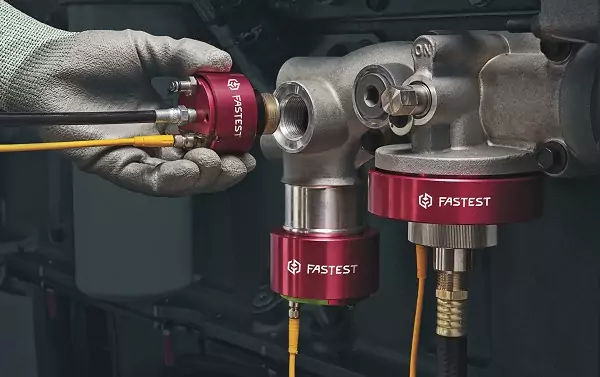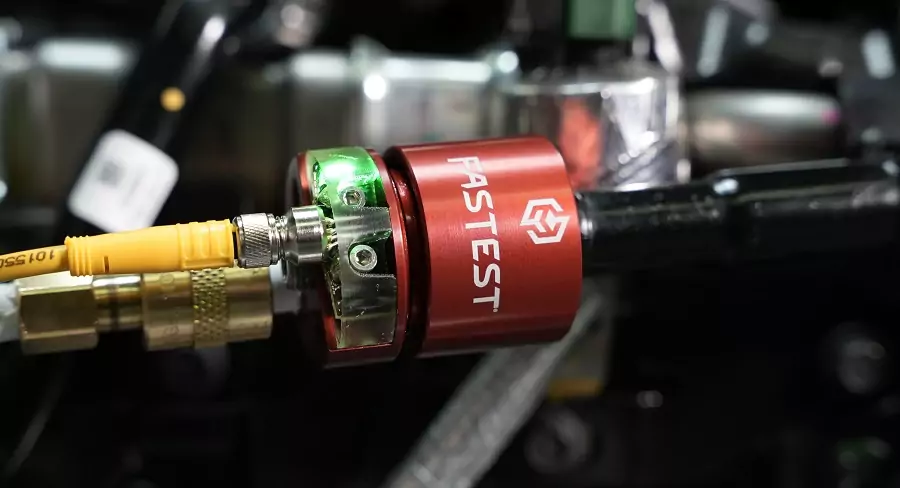The Importance of Leak Testing

Leak testing is a method of product quality control that identifies manufacturing inconsistencies by porosity testing a manufactured part or system leaks. This non-destructive test is typically accomplished by sealing any ports or holes the test product might have and then introducing a test medium—usually air, nitrogen, or helium—into or around the test piece. From there, a trained operator or a leak test instrument will be able to observe any leaks coming into or out of the product.
A leak test can be performed at various stages throughout the manufacturing process. Many original equipment manufacturers (OEMs) require that components be leak tested to ensure integrity before assembly. The OEM might also perform a leak test on the entire system during different stages of assembly to ensure an optimal, safe product for the end-user. Similarly, a leak test might be used at various times during a product development process to bench test prototypes. Throughout this post, we will cover important considerations when implementing a leak testing process, as well as some key trends in the leak testing industry.
Why Leak Test?
Leak testing provides verification that a manufactured product meets predetermined specifications that allow the part or system to operate as intended. This process is crucial to ensuring product quality and the safety of end-users. Additionally, a reliable leak testing process will help reduce product warranty claims and the cost of quality for systems manufacturers.
There are also several production efficiencies benefits to an optimal leak testing process. A leak test will help validate supplier component quality and verify that operators have assembled system components correctly. In doing so, the manufacturer can improve production efficiency, and eliminate rework and product scrap waste. “If a leak is missed early on in the manufacturing process, it can cause significant headaches later,” says Mark Spindler, director of technical sales at FasTest. “Imagine you are assembling a sixteen-liter engine, everything is going well, but then the final leak test fails because the head gasket was not seated correctly. The amount of wasted time that goes into quarantining the engine, identifying the cause of the leak, disassembling the system, and repairing it, is enormous.” If a leak testing process is consistent, manufacturers will be able to use leak tests to perform root cause analysis for assembly or component breakdowns, which will greatly improve the manufacturing processes as a whole and reduce the number of failed tests down the road.
The Importance of the Connection
The most important aspect of any leak test is a reliable, consistent leak-tight connection and seal for all ports and holes on the part or system being tested. This holds true regardless of the type of leak test being utilized; however, the connection is often overlooked when a manufacturer is developing their leak test process. The goal in any leak test is to isolate the component or system for testing, which can only be accomplished when all the test ports and holes are sealed and leak-tight.
Without a proper seal, the leak test is prone to a false failure: leak tests that register a leak—or fail—when the part being tested is leak-free. A false failure is typically caused by an improper connection or profile seal, which allows media to seep into or out of the test part, resulting in a test failure. Many failed leak tests require the part to be scrapped or moved off the manufacturing line for retesting. The potential product scrap waste and rework, as well as process bottleneck considerations, are significant. Fortunately, false failures are easily avoided utilizing reliable quick connection tools, dependable sealing, and proper rigging.

The most reliable, consistent, and efficient method of creating a leak-tight seal is the FasTest Connection Tool. These Connection Tools are engineered to create a repeatable leak-tight connection to a specific type of port, thread, tube, or hole. The Connection Tools allow users to safely make the necessary connections to run a proper leak test without the concern of false failures or unintended disconnections. These devices significantly improve the efficiency of the leak testing process by cutting test setup time by up to 95%, reducing product scrap waste and rework, and sealing the devices without damaging the test piece.
Trends in Leak Testing
The industry 4.0 movement is disrupting manufacturing companies all over the world. The goal of companies that embrace the industry 4.0 movement is to produce goods at lower costs, drive throughput efficiencies, and provide superior output quality than lagging competitors. In leak testing, industry 4.0 is driving changes in many key areas including the rise of intelligent test connection tools.
Intelligent Test Connections
![]()
To help gather more process and leak testing data, many manufacturers have begun relying on FasTest ICON™ Connection Tools. These Connection Tools have incorporated sensors that allow leak test process managers to collect data and monitor testing operations at the point of connection. “Many manufacturers want more data to work with in general, but more importantly they want actionable data that can improve their processes immediately,” says Dustin Sirny, director of advanced technologies at FasTest. “Data points such as seal placement can help process engineers immediately identify problems in the leak testing process and take specific corrective actions.”
With smart quick connection tools, users can ensure that the proper connections have been made and that the test part or system has been successfully isolated before running a leak test. “We’ve seen many manufacturers completely transform the way they are leak testing, and more importantly how they are isolating their manufactured part”, said Sirny. “Intelligent test connections also allow operators to monitor the health of the connection tool’s wear components and optimize maintenance schedules to avoid costly downtime.”
As Industry 4.0 continues to revolutionize manufacturing processing and companies, leak testing methods will also evolve. “The leak testing market went largely unchanged for several years,” said Sirny. “With the emergence of Industry 4.0, we are seeing major changes in leak testing for the first time in a decade. I expect that we will see many more changes to the leak testing process and best practices in the coming years.”
Connect with FasTest: Twitter • Facebook• LinkedIn
For additional FasTest products or information, contact:
1-800-444-2373 • www.fastestinc.com • marketing@fastestinc.com
